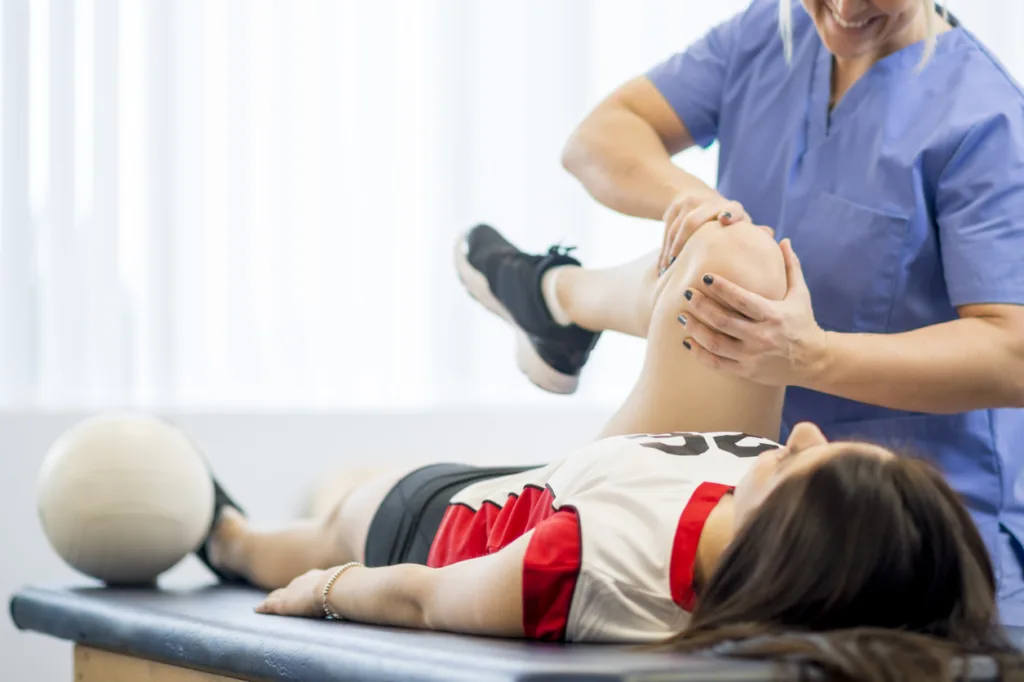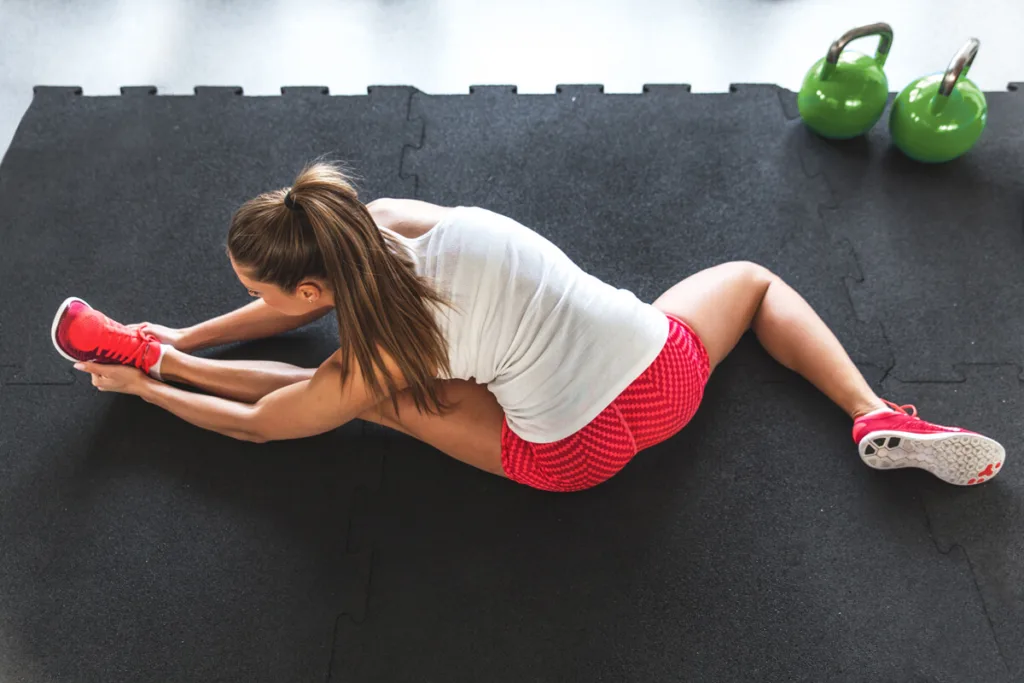Ugh, injuries suck. One day you’re killing your workouts, the next you’re sidelined not sure when you’ll crush a gym session properly again. Talk about demoralizing! When I tore my rotator cuff last year, I felt like I lost a piece of my identity. The gym was my stress reliever, my social outlet, my temple. Not being able to exercise took a major toll both physically and mentally.
But healing from injury, while extremely frustrating, can also give you new perspective. With time and patience, it can even help you come back stronger both in body and mind. In this post, I’ll walk you through how to recover from injury safely so you can gradually rebuild your strength and confidence to return better than before. Let’s do this!

Understanding the Recovery Process
Every injury is different, so it’s crucial to chat with your medical team to understand your personal recovery timeline. A minor muscle strain might heal in a few weeks with some rest while a major joint injury like an ACL tear may take many months involving surgery and extensive rehab.
It also really helps to understand exactly what’s going on in your body post-injury. For me, learning about the detailed process of how torn tissues regenerate and repair themselves helped me better wrap my head around why rest and gradual training is so essential. It also made me respect my body more appreciating how remarkably it can heal itself given the right inputs.
Recovery is almost never linear either. There will be ups and down days even months into the process. Two steps forward one step back is normal. Just know that as long as you’re making general progress, you’re heading the right direction. Focus less on day-to-day fluctuations, and more on the overall trajectory over weeks and months.
Crafting Your Personal Recovery Plan
When you’ve been inactive for a while, it’s tempting to jump back into your normal intense training as soon as you’re feeling a bit better. Fight that urge! Easing gradually back into exercise is absolutely crucial for preventing re-injury and extra downtime.
Instead, work closely with your physiotherapist or trainer to design a customized program catered to your injury and current abilities. They can guide you when it’s wise to progress and by how much. Pay close attention to your body as well. Scale back if certain movements cause pain or discomfort. In the early stages, focus on gentle activities like walking, stationary cycling or swimming to keep yourself active without placing too much stress on the injured area.

Regaining Strength and Mobility After Injury
Once you’ve got medical clearance, two of the most vital components of recovering from injury are restoring mobility and rebuilding strength.
For mobility, begin with simple range of motion exercises like knee raises or shoulder circles. Pay particular attention to the injured joint but also important not to neglect flexibility training for the rest of your body. Tightness and imbalances elsewhere can increase risk of re-injury. Over time, progress to gentle dynamic stretches and yoga flows with awareness on proper form. Go slow, listening closely to your body. You’ll regain full mobility before you know it.
In terms of rebuilding strength start with bodyweight movements before gradually progressing intensity by adding resistance bands, lightweight dumbbells or machines. Again, it’s all about starting out super basic and slow then building progressively over time. Be patient with small strength gains. Even if you’re lifting less than half of your old max, trust that those small weights are stimulating powerful internal repairs helping future you lift even heavier.
Reconditioning Cardio and Stamina
While essential, strength training alone is not sufficient for full recovery. Gently reconditioning your cardiovascular system with some elevated heart rate training helps deliver nutrient and oxygen-rich blood to your recovering tissues to enhance healing.
For most injuries, low-impact cardio options like walking are perfect. Gradually increase pace and duration as you’re able without pain. I highly recommend getting a fitness tracker to quantify your progress. Seeing those step counts and mileage numbers tangibly increase motivated me hugely.
Other great low-impact cardio options that gently get your heart pumping while avoiding additional joint stress include swimming, cycling, elliptical training, and the AlterG anti-gravity treadmill.
Just listen to your body carefully and stop immediately if you feel any pain. Pushing too intensely too soon will just delay your comeback. Be patient advancing slowly through small milestones. The heart gains will accumulate over time.

Tuning Into Your Mindset
They say recovery is 90% physical and 10% mental but I disagree – it’s at least 50/50. Tuning into your mental state is just as crucial as rehabbing your injured muscles and tissues.
Pay close attention to bodily sensations as you exercise. Avoid “pushing through pain” or trying to ignore discomfort. That kind of hardcore mentality is often how athletes end up injured in the first place. Instead be present with subtle feelings in each muscle and joint, modifying movements to determine what feels stable and comfortable.
From mental health perspective, be especially patient and kind with yourself throughout the recovery journey. View periodic setbacks or bad days as inevitable ups and downs rather than failures knocking you totally off course. Find self-care tools like meditation, breathwork and counseling to recentre when frustration bubbles up. Healing the mind accelerates healing the body.
Fueling Your Body Properly
What you feed your body matters hugely for recovery outcomes. Focus on incorporating anti-inflammatory whole foods into your diet like fruits, vegetables, leafy greens, lean proteins and omega-3 rich fats. These nutrients help repair damaged tissue and cool systemic inflammation. Don’t skimp on hydration either – water supports every stage of the healing process.
Some research also shows targeted collagen supplementation assists with rebuilding connective tissues like ligaments and tendons. Consider mixing collagen peptides into your smoothies or protein shakes.
Be wary however of emotional or boredom eating during recovery downtime. Process feelings of sadness, frustration or reduced self-esteem with supportive friends or mental health professionals. Don’t suppress emotions with food. Nourish both body and mind.
Pushing Through Recovery Roadblocks
The road to full recovery is filled with twists, turns and obstacles. Prepare mentally for the near-inevitability of periodic pain, soreness flare ups, nagging stiffness or reduced mobility. See these setbacks as temporary fluctuations rather than total roadblocks reversing your progress. They’re often signals from your body to pull back and recover before continuing to gradually progress.
There will also be emotional hurdles like motivation lulls, grief over lost fitness abilities and comparison envy when peers seem fully healed faster. Have compassion for these psychological challenges. Actively develop your mental toolbox to overcome them – positive self-talk apps like Shine are great. Maybe schedule an appointment with a counselor specializing in sports injuries to contextualize your situation. Venting to friends who have been through similar recoveries can help too.
Most important, internalize that with consistent self-care and effort, your physical and mental fortitude will bounce back stronger than ever before. Let the small wins fuel you.

The Takeaway
Recovering fully from severe injury requires extraordinary physical and mental resilience. But have faith that our bodies and minds can heal given the proper love, patience and care. Be compassionate with yourself through inevitable ups and downs. Design a customized return to training plan focused on consistency and progressive gains tailored to your unique situation and needs.
Arm yourself with the proper knowledge, resources and support team. View even painful roadblocks as opportunities for growth helping you emerge physically unbreakable and mentally unshakeable. The tools and perspective gained through injury recovery last far beyond full rehabilitation helping you achieve your greatest self – body, mind and spirit.
Wishing you strength, courage and community comfort during your healing journey ahead! Let me know if any other recovery questions come up.
Thank you for reading this post, don't forget to subscribe to our free newsletter
!

